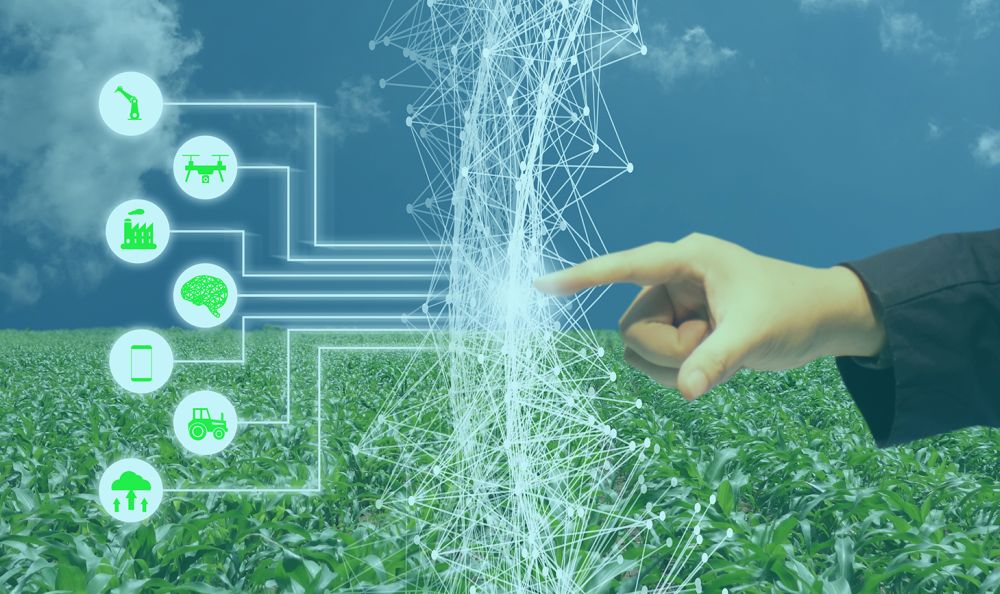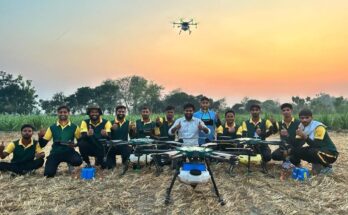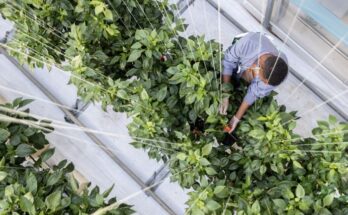It is one of the marvels of human innovation but artificial intelligence (AI) offers a tough competition to us. The days of speculating rain and sunshine may soon fade with artificial intelligence’s capability to predict right conditions with precision to an extent. It comprises one of the basic aspects of precision agriculture (PA) promoted even by the government to boost productivity and in turn, farmers’ income. AI-based sowing advisories lead to 30 per cent higher yields as Microsoft, in collaboration with International Crops Research Institute for the Semi-Arid Tropics (ICRISAT), developed an AI Sowing App powered by Microsoft Cortana Intelligence Suite including Machine Learning and Power BI. The app sends sowing advisories to participating farmers on the optimal date to sow without them installing any sensor in their fields or any additional cost; all they need is a phone capable of receiving text messages. The performance of AI on the fields have prompted NITI Aayog, to start a pilot project on precision agriculture using AI in 10 districts from seven states: Assam, Bihar, Jharkhand, Madhya Pradesh, Maharashtra, Rajasthan, and Uttar Pradesh.
Moisture Adequacy Index (MAI) may bring significant change
The AI mechanism calculated the crop-sowing period by gathering and analysing the historic climate data spanning over 30 years, from 1986 to 2015 and decided a Moisture Adequacy Index (MAI) to determine the optimal sowing period. MAI is the standardised measure used for assessing the degree of adequacy of rainfall and soil moisture to meet the potential water requirement of crops. The daily rainfall recorded and reported helped to calculate the real-time MAI while the future MAI is calculated from weather forecasting models which are downscaled to build predictability, and guide farmers to pick the ideal sowing week.
ICRISAT, a non-profit, non-political organisation initiates 10 sowing advisories and they disseminated among the farmers until the harvesting was completed. These advisories contained essential information including the optimal sowing date, soil test-based fertiliser application, farm yard manure application, seed treatment, optimum sowing depth, and more. In tandem with the app, a personalised village advisory dashboard provided important insights into soil health, recommended fertiliser, and seven-day weather forecasts.
This is a major shift from the traditional practices where for centuries; farmers had been using age-old methods to predict the right sowing date for crops like cotton. Mostly, they would choose to sow in early June to take advantage of the monsoon season, which typically lasts from June to August. However, the changing weather patterns in the past decade have led to unpredictable monsoons, causing poor crop yields and loss to the farmers.
Pest attack prediction fosters better planning
Creating a pest attack prediction model again leverages AI and machine learning to indicate in advance the risk of pest attack. Common pest attacks, such as Jassids, Thrips, Whitefly, and Aphids can pose serious damage to crops and impact crop yield. To enable farmers take preventive action, guidance on the probability of pest attacks would be helpful. Farmers will get predictive insights on the possibility of pest infestation which will help them to plan, adopt pre-emptive measures and reduce crop loss due to pests. All this will certainly contribute to double the farm income. The measure to indicate the risk of pest attacks based on weather conditions and crop stage in addition to the sowing advisories is a help long overdue.
Shifting weather patterns including increase in temperature, rapid changes in rain patterns and levels, and ground water density can affect farmers; especially those who are cultivate unirrigated drylands and depend a lot on rains for their crops. Leveraging the cloud technology and AI to issue advisories for sowing as well as predict pest control and commodity pricing is a major move towards creating increased income for the farming community.
(Views expressed in the article are author’s own)





I am feeling motivated and now work harder to start the career in Artificial Intelligence, hope will get similar success. Thanks for sharing your Artificial Intelligence experience.
Thanks for sharing your Artificial Intelligence experience. I am really happy to say it’s an interesting post to read . I learn new information from your article , you are doing a great job .
We as a team of real-time industrial experience with a lot of knowledge in developing applications in python programming (7+ years) will ensure that we will deliver our best in python training in Vijayawada, and we believe that no one matches us in this context.
Such a nice blog on artificial intelligence in agriculture eases risk of changing weather patterns and I hope you keep update us with such great tips and information in future too. This is a great post; I will share as much as I can.